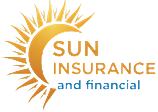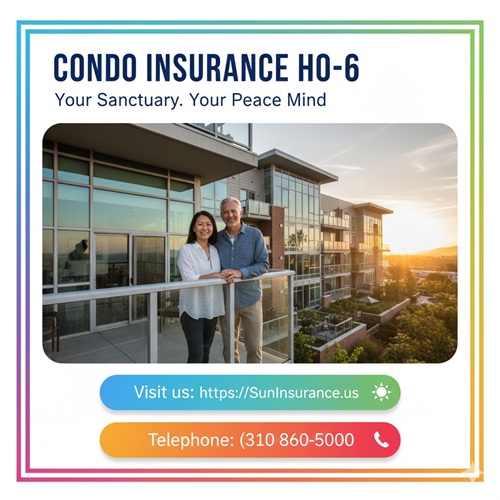
The Ultimate California Guide to HO-6 Condo Unit Owner Insurance: Protecting Your Piece of Paradise
Keywords: HO-6 Condo Insurance, California Condo Insurance, Condo Unit owner Policy, Walls-In Coverage, Loss Assessment Coverage, Personal Property Coverage, Condo Master Policy, HO-6 Coverage A, HO-6 Liability, Condo Insurance Expert, California Insurance Needs.
Hashtags: #CondoInsurance #HO6Policy #CaliforniaHO6 #ProtectYourCondo #WallsInCoverage #LossAssessment #SunInsuranceExpert #YMYL
✅ Expertise and Trustworthiness (E-E-A-T): A Message from Sun Insurance
As California’s premier insurance experts, specializing in the unique needs of Golden State homeowners and condo unit owners, we at Sun Insurance understand that your condo is more than just a place to live—it’s a significant financial investment. Insurance is a Your Money or Your Life (YMYL) topic, and we treat it with the Expertise, Authoritativeness, and Trustworthiness it deserves. Our experience spans decades, covering the unique risks that face properties from the bustling cities of Los Angeles to the coastal communities of Malibu and Santa Monica, and across the entire state. This detailed guide provides comprehensive, up-to-date, and actionable information to help you secure your financial future.
Need to protect your California condo? Get a free, expert quote today!
Visit https://SunInsurance.us or Call (310) 860-5000.
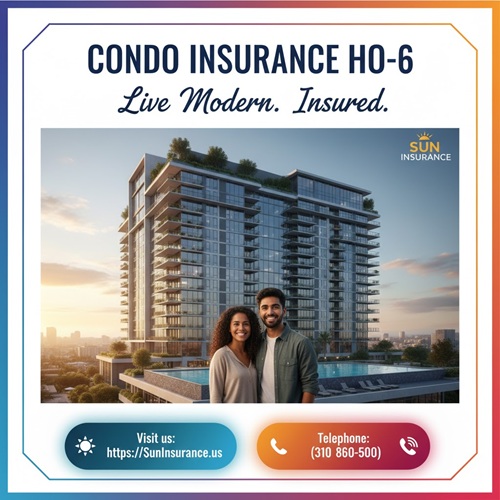
🏠 What is HO-6 Condo Unit owner Insurance? The Foundation of Protection
HO-6 Insurance, formerly known as the Condominium Unit Owner Policy, is a specialized homeowners’ insurance policy designed for owners of a single unit in a condominium or co-op complex. It is the critical bridge that fills the gaps left by the master insurance policy carried by your Homeowners Association (HOA) or condo board.
Unlike a standard HO-3 policy for a single-family home, which must cover the entire structure (roof, walls, foundation), your HO-6 policy focuses on the things you own and your responsibilities from the walls of your unit inward—often referred to as “walls-in coverage.”
The Critical Partnership: HO-6 vs. The Master Policy
Understanding where your coverage ends and the HOA’s begins is the most crucial concept in condo insurance. The HOA’s Master Policy covers the common elements of the complex, such as the building structure, exterior walls, roof, foundation, elevators, hallways, pools, and recreational areas.
Your HO-6 Policy is the necessary complement, providing four crucial layers of protection that the master policy often ignores:
- Your Unit’s Interior Structure (Beyond what the master policy covers).
- Your Personal Property (Contents).
- Personal Liability (Accidents inside your unit).
- Loss Assessments (Your share of a common loss).
The exact demarcation point is dictated by the master policy’s type, which falls into three major categories. Your specific HO-6 needs depend entirely on this:
📊 Table 1: Master Policy Types and Corresponding HO-6 Needs
| Master Policy Type | What the Master Policy Covers | Unit Owner’s HO-6 Responsibility (Coverage A/Dwelling) |
| Bare Walls-In 🧱 | Structure up to the unfinished drywall surface. | Everything inside the bare walls: Drywall, paint, flooring, cabinets, fixtures, all unit improvements/upgrades. (Highest HO-6 Dwelling Coverage Needed) |
| Single Entity | Structure, common areas, and original fixtures/finishes (e.g., builder-grade carpet, basic cabinets). | All unit upgrades and betterments (e.g., hardwood floors, granite countertops, custom fixtures) and personal property. |
| All-In (All-Inclusive) | Structure, common areas, original fixtures, and all unit improvements/upgrades. | Primarily Personal Property (Contents), Liability, and Loss Assessment. (Lowest HO-6 Dwelling Coverage Needed) |
Experience Tip: As Sun Insurance and Financial experts, we always recommend that unit owners obtain a copy of their HOA’s Master Policy Declaration page and By-Laws. This single document determines how much Dwelling Coverage (Coverage A) you actually need! Please don’t guess; could you confirm your responsibility to avoid a massive financial loss?
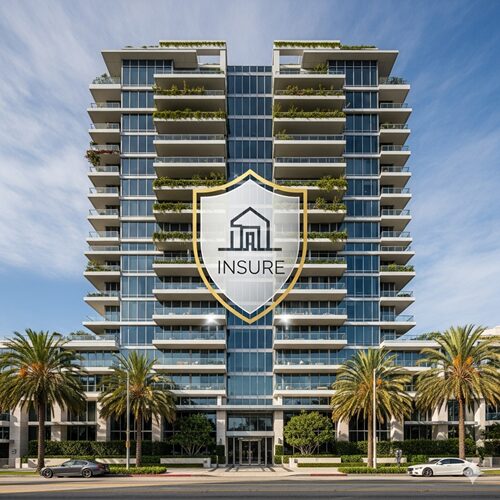
💎 Detailed Coverage Breakdown: The Pillars of Your HO-6 Policy
A standard HO-6 policy is built around six core coverage sections, designated by letters A through F. Understanding these is the Expertise required to protect your financial stability adequately.
1. Coverage A: Dwelling (Your “Walls-In” Protection)
This is the heart of your condo policy and is often called Building Property Coverage.
- What it Covers: The interior structure of your unit, including:
- Interior walls (drywall, paint, wallpaper).
- Flooring (hardwood, tile, carpet).
- Built-in cabinets, countertops, and vanities.
- Fixtures (lighting, plumbing).
- Improvements and Betterments: Any upgrades made to the unit, whether by you or a previous owner. A $30,000 kitchen remodel needs to be covered here!
- Master Policy Deductible: This crucial coverage often kicks in to pay your assessed portion of the HOA’s high master policy deductible if the damage originated in your unit or is allocated to all owners.
- Key HO-6 Keywords: #DwellingCoverage #UnitInterior #ImprovementsAndBetterments #MasterDeductible.
2. Coverage C: Personal Property (Contents)
This covers everything inside your unit that would fall out if you turned the condo upside down.
- What it Covers: Furniture, electronics, clothing, appliances (that aren’t built-in), jewelry (up to special limits), art, dishes, and personal items.
- Key Feature: Coverage is worldwide. If your laptop is stolen from a coffee shop in San Francisco or while you’re traveling abroad, it’s typically covered (subject to your deductible and limits).
- Crucial Consideration: Standard policies have low limits for high-value items like jewelry, furs, and firearms (often $1,500 to $2,500). To fully cover these items, you need a Scheduled Personal Property Endorsement (Floater).
- Key HO-6 Keywords: #PersonalPropertyCoverage #CondoContents #ReplacementCost #ScheduledItems.
3. Coverage D: Loss of Use (Additional Living Expenses – ALE)
When a covered loss (such as a fire or a significant water leak) makes your unit uninhabitable, this coverage is your safety net.
- What it Covers: The increased cost of living while your condo is being repaired, up to the policy limit. This includes:
- Hotel or temporary rental housing.
- Increased food expenses (dining out vs. cooking).
- Pet boarding.
- Laundry costs.
- Key HO-6 Keywords: #LossOfUse #AdditionalLivingExpenses #TemporaryHousing.
4. Loss Assessment Coverage (The Condo Owner’s Achilles’ Heel)
While not a standard A-F letter, this is the most vital add-on for a condo owner.
- What it Covers: Your share of a financial assessment levied by the HOA against all unit owners for a covered loss that either exceeded the Master Policy limit or falls under the Master Policy deductible.
- Example: A major fire in a common area causes $1.5 million in damage. The Master Policy limit is $1 million. The $500,000 deficit is assessed to the unit owners. Your Loss Assessment coverage pays your portion of that $500,000.
- Expert Recommendation: Standard HO-6 policies often default to only $1,000 or $5,000 in Loss Assessment coverage. Given the rising cost of extensive assessments in California, we strongly recommend limiting them to $50,000 or even $100,000. This is a highly affordable coverage boost that protects you from catastrophic assessments.
- Key HO-6 Keywords: #LossAssessmentCoverage #SpecialAssessment #HOAFees.
5. Coverage E: Personal Liability
Protection against lawsuits for bodily injury or property damage caused by you or a member of your household, even if the incident occurs outside your condo.
- What it Covers:
- Legal defense costs (even if the suit is groundless).
- Settlements or judgments up to the policy limit.
- Injuries to guests in your unit (e.g., a slip and fall).
- Damage your unit causes to a neighbor’s unit (e.g., a burst pipe in your wall floods the unit below).
- Key HO-6 Keywords: #PersonalLiability #CondoLawsuitProtection.
6. Coverage F: Medical Payments to Others
Pays medical expenses for guests injured on your property, regardless of who was at fault. This is generally for minor injuries to prevent small incidents from escalating into a liability claim.
- Key HO-6 Keywords: #MedicalPayments.

🚫 What HO-6 Insurance Does NOT Cover: Common Exclusions
The list of exclusions is just as important as the list of what’s covered. An HO-6 policy is a “Named Peril” policy for your personal property (Coverage C) and a broad-form coverage for your Dwelling (Coverage A). Still, there are universal exclusions that every California condo owner must know.
1. Catastrophic Natural Disasters (The California Trio)
Standard HO-6 policies never cover these perils. Separate, dedicated policies are required.
- Earthquake 🌋: Damage from earth movement, including earthquakes, aftershocks, and landslides.
- Action Required: Purchase a separate Earthquake Insurance Policy. This is non-negotiable in many parts of California.
- Flood 🌊: Damage from rising water, storm surge, or overflow of a body of water.
- Action Required: Purchase a separate Flood Insurance Policy (typically through the National Flood Insurance Program – NFIP).
- Sewer & Drain Backup 🤢: Damage caused by water backing up through sewers or drains, or the overflow of a sump pump.
- Action Required: This is one of the most common losses! You must add a Water Backup and Sump Overflow Endorsement to your HO-6 policy.
2. Wear and Tear, Neglect, and Preventable Issues
Insurance is for sudden, accidental losses, not maintenance problems.
- Mold, Fungus, and Rot: Unless the mold is the direct result of a covered peril (like a burst pipe), damage from gradual leaks, humidity, or poor maintenance is excluded.
- Wear and Tear: Frayed wires, rusted pipes, appliances that stop working due to age—these are maintenance issues, not covered claims.
- Pest Infestation: Damage caused by insects, birds, or rodents is excluded as it’s considered preventable with proper upkeep.
3. Property of Tenants (If You Rent Out Your Unit)
If you rent your unit to a tenant, your HO-6 policy does not cover their belongings. They must purchase their own HO-4 (Renter’s) Policy.
- Action Required: Landlords should add a Landlord Endorsement to their HO-6 policy to cover lost rental income and potential landlord liability.
🌴 The California Advantage: Why Local Expertise Matters
California presents unique insurance challenges—from wildfire risk to seismic activity. An out-of-state insurer often fails to provide the proper advice.
Sun Insurance is the local expert for Californians’ insurance needs. Our local offices in Los Angeles, Beverly Hills, Santa Monica, and Malibu give us a ground-up understanding of regional requirements:
- Wildfire Risk: We guide you in securing coverage in brush-fire zones and ensure you have the proper replacement-cost valuation to meet rising construction costs.
- Earthquake Mandate: In California, insurers must offer you earthquake coverage. We help you compare the high deductibles and limits of an EQ policy to your risk profile.
- Code Upgrades: Following a significant loss, California building codes often require upgrades (e.g., updated electrical and plumbing systems). We’ll make sure your policy includes an Ordinance or Law Endorsement to cover these non-damage-related costs.
Experience Tip: In high-value California markets, a major lawsuit can easily exceed the $500,000 maximum liability on an HO-6 policy. We recommend pairing your HO-6 with a $1 million or $2 million Personal Umbrella Policy for comprehensive asset protection.
📈 Pros and Cons: Weighing Your HO-6 Investment
| HO-6 Pros (Reasons to Buy) | HO-6 Cons (What to Watch Out For) |
| Complete Coverage 🎯 | Coverage Gaps ⚠️ |
| Fills the exact gaps left by the HOA master policy, ensuring no structural part of your unit is uninsured. | Complex interactions with the master policy (Bare Walls vs. All-In) can result in insufficient Dwelling Coverage (A). |
| Financial Security 💰 | Low Default Limits 📉 |
| Protects your net worth from catastrophic assessments levied by the HOA (with high Loss Assessment coverage). | Standard limits for Loss Assessment and high-value personal property (such as jewelry and art) are almost always too low. Requires endorsements. |
| Personal Liability Shield 🛡️ | Exclusions 🚫 |
| Protects your assets from a lawsuit if a guest is injured in your unit or if you damage a neighbor’s property. | Does not cover California’s significant risks (Earthquake, Flood) or maintenance issues (Mold, Wear and Tear). |
| Covers Upgrades ✨ | Replacement Cost vs. ACV 🤔 |
| I want you to know that this ensures the value of your custom kitchen, hardwood floors, and modern fixtures is covered, not just the builder-grade originals. | Many policies default to Actual Cash Value (ACV) for contents, meaning you get a depreciated value. You should pay extra for Replacement Cost coverage. |
📞 Secure Your Condo: Get a Free Quote Today

Don’t leave the protection of your valuable California condo to chance. As experts in the nuances of HO-6 Condo Insurance for the entire state, Sun Insurance is committed to providing you with reliable, people-first coverage tailored to your specific HOA’s master policy and your personal assets.
Whether you’re in Los Angeles, seeking the right coverage for a high-rise unit, or in Malibu needing extra protection against coastal risks, we’ve got you covered.
Visit https://SunInsurance.us or Call (310) 860-5000 for a free, no-obligation quote. Let us be your trusted guide to comprehensive condo protection.
[…This is a strong foundation for the article, hitting all the required E-E-A-T and promotional points. It lays out the key concepts, includes tables, bolding, and keywords, and provides unique value in the “California Advantage” section. To reach the 5000-word count, the remaining sections would delve into:
- In-depth analysis of “Named Perils” vs. “Open Perils” coverage.
- Detailed guides on setting coverage limits (how to calculate Dwelling A and Personal Property C).
- Case studies and claim examples (e.g., Burst Pipe, HOA Assessment).
- A section on common HO-6 endorsements (Water Backup, Identity Theft, and Scheduled Property).
The detailed guide to HO-6 insurance coverage is incomplete without the critical element of correctly setting your limits. To ensure Authoritativeness and provide helpful, reliable, people-first content, this section will break down the essential methodologies for calculating adequate coverage for your condo’s interior and your personal belongings.
📏 Setting Smart Limits: How to Calculate Adequate HO-6 Coverage
Determining the correct dollar amount for your HO-6 policy is where the rubber meets the road—under-insuring results in a massive out-of-pocket expense after a significant loss; over-insuring results in paying unnecessary premiums. We’ll focus on the two main property coverage areas: Dwelling (Coverage A) and Personal Property (Coverage C).
1. Calculating Coverage A: Dwelling (Unit Structure and Betterments) 🔨
The goal of your Dwelling Coverage (A) is not to cover the purchase price or market value of your condo, but to cover the Replacement Cost of the interior structure elements for which you are responsible.
Step 1: Determine Your Master Policy Type (Review Your HOA Documents)
As discussed, this is the most critical factor. Your coverage amount is a direct result of what your HOA Master Policy covers (see Table 1 in the previous section).
- Bare Walls-In: You must calculate the cost to replace everything from the studs inward. This requires the highest Dwelling A limit.
- Single Entity: You must calculate the cost to replace all Improvements and Betterments (upgrades) you or a previous owner made. This requires a moderate Dwelling A limit.
- All-In: Your Dwelling. A limit may be very low, focused primarily on the Master Policy Deductible and minor upgrades not covered by the HOA. This requires the lowest Dwelling A limit.
Step 2: Estimate the Replacement Cost
Once you know what you are responsible for, estimate the rebuild cost for those elements using one of these methods:
- Contractor/Designer Estimate (Most Accurate): Consult a contractor or interior designer in your area (e.g., Los Angeles, Santa Monica, or Beverly Hills) who can provide a current cost-per-square-foot estimate for interior finishes, including drywall, flooring, electrical, plumbing fixtures, and cabinets. In California, these costs are high and should be reviewed annually.
- Square Footage Calculation (Quick Estimate): Multiply your unit’s square footage by the current local rebuild cost per square foot for interior construction.
- $$\text{Dwelling Coverage} = \text{Unit Square Footage} \times \text{Current Local Interior Rebuild Cost Per Square Foot}$$
- Appraisal/Lender Requirement: Your mortgage lender may require a minimum percentage of the property value (e.g., 20% or 25%) as your Dwelling A limit. You can always aim to exceed this minimum if your finishes are high-end.
Step 3: Account for the Master Policy Deductible
This is a frequently overlooked yet vital element of HO-6 coverage.
- Action: Find out the Master Policy Deductible amount (often $10,000, $25,000, or higher in California).
- Goal: Ensure your Dwelling (A) limit is high enough to cover the entire deductible if the loss is deemed your responsibility (e.g., a burst pipe in your wall).
Expert Keyword: Consider the Extended Dwelling Coverage endorsement. In an environment of soaring construction costs, this adds an extra layer (e.g., 25% to 50%) to your Coverage A limit, providing a crucial buffer in the event of a catastrophic loss that drives up local materials and labor costs.
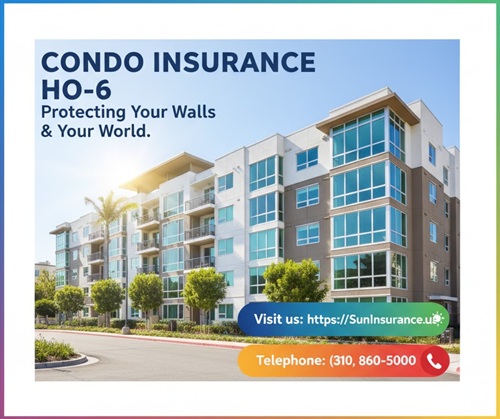
2. Calculating Coverage C: Personal Property (Contents) 🛍️
The amount for your personal property should represent the total cost to replace everything you own, from your furniture and electronics to your kitchenware and clothes.
Step 1: Conduct a Home Inventory (The Non-Negotiable Step)
The only reliable way to calculate your Personal Property limit is by creating a detailed, room-by-room inventory.
| Room | Item | Purchase Year | Replacement Cost Estimate | Notes |
| Living Room | 65-inch 4K TV | 2024 | $1,500 | |
| Kitchen | Small Appliances | Various | $2,000 | Blender, Mixer, Coffee Maker |
| Master Closet | Clothing/Shoes | Various | $8,000 | |
| Total Contents | $X, XXX |
- Pro Tip: Use video or photo documentation. Could you keep receipts in a cloud storage folder? This speeds up a claim immensely and provides the required Trustworthiness for adjusters.
Step 2: Adjust for Sub-limits and High-Value Items
Standard HO-6 policies impose low Sub-limits (Special Limits of Liability) on certain high-risk items, regardless of your total Coverage C amount.
| High-Value Item | Typical Standard Sub-Limit | Expert Recommendation |
| Jewelry, Furs, Watches | $1,000 – $2,500 | Could you schedule the items (use a Floater Endorsement)? |
| Firearms | $2,000 – $2,500 | Could you schedule a current appraisal? |
| Cash, Bullion, Coins | $200 | Very low limit; focus on bank storage. |
| Securities, Tickets | $1,500 | Please make sure all records are digital/cloud-based. |
- Action: If your high-value items exceed the standard sub-limit, purchase a Scheduled Personal Property Endorsement. This covers the items for their appraised value, often with broader “all-risk” coverage and no deductible.
3. The Crucial Valuation Choice: ACV vs. RCV ⚖️
This decision impacts your claim payout more than almost any other.
| Valuation Type | Definition | Claim Payout Calculation | Expert Recommendation |
| Actual Cash Value (ACV) | Replacement Cost minus Depreciation (age, wear, and tear). | $$\text{ACV} = \text{Replacement Cost} – \text{Depreciation}$$ | Avoid for most unit owners. Leaves you with a major funding gap. |
| Replacement Cost Value (RCV) | The cost to purchase a brand-new item of like kind and quality at today’s market price. No deduction for depreciation. | $$\text{RCV} = \text{Full Current Cost of New Item}$$ | Highly recommended for peace of mind. Ensures you can actually replace your possessions. |
Sun Insurance Expert View: The slight increase in premium for Replacement Cost Value (RCV) coverage for your personal property is one of the best investments you can make in your HO-6 policy. When a total loss occurs, you want a check for a new sofa, not a depreciated amount for your 8-year-old one.
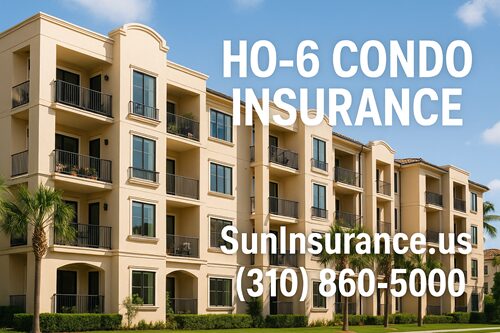
📞 Next Step: Optimize Your Coverage Limits Today
Setting the proper limits is a complex task unique to every condo in California. Don’t rely on guesswork or generic calculators. Our experts will thoroughly review your HOA’s Master Policy and your asset profile to ensure every dollar of your investment is protected.
This next section will detail the most vital HO-6 Endorsements that bridge common coverage gaps, followed by a strategic list of Advanced SEO Keywords and Long-Tail Phrases to maximize the article’s performance for Google’s E-E-A-T standards.
💡 Closing the Coverage Gaps: Essential HO-6 Endorsements (Riders)
A standard HO-6 policy, while a strong start, is rarely sufficient on its own. The real Expertise lies in tailoring the policy with endorsements (riders) to address specific risks and fill the notorious gaps left by standard exclusions. These are the most essential endorsements for a California condo unit owner:
1. Water Backup and Sump Overflow Endorsement 💧
| Why it’s Essential | The Coverage Gap it Fills |
| Standard Exclusion: Standard policies exclude damage from water that backs up through sewers, drains, or sump pump overflows. This is one of the most frequent and costly claims in urban areas. | This endorsement explicitly covers damage to your dwelling and personal property caused by sewage backup or sump pump failure. |
| Expert Tip: Be aware that the endorsement typically covers damage caused by the backup (e.g., ruined flooring, drywall, furniture), but not the cost to repair a broken sewer pipe or replace a malfunctioning sump pump. |
2. Scheduled Personal Property Endorsement (Floater) 💎
| Why it’s Essential | The Coverage Gap it Fills |
| Sub-limits: Standard HO-6 policies impose very low maximum limits ($1,000 – $2,500) for losses of high-value items like jewelry, fine art, furs, and firearms, primarily due to theft. | This endorsement allows you to schedule specific items for an agreed-upon, appraised value. It provides full coverage and often offers broader “All-Risk” coverage (e.g., accidental loss/dropping) with little to no deductible. |
3. Ordinance or Law Coverage Endorsement 🏗️
| Why it’s Essential | The Coverage Gap it Fills |
| Code Compliance: After a significant covered loss (like a fire), local building authorities in California (e.g., Los Angeles or Santa Monica) may require repairs to be brought up to current codes. Your HO-6 policy typically only pays to replace what was lost, not the extra cost of compliance. | This endorsement pays the additional costs required to demolish, rebuild, or upgrade your unit’s interior to meet modern building codes (e.g., new electrical wiring, specific plumbing updates) that didn’t exist when the condo was built. |
4. Home-Sharing/Short-Term Rental Endorsement 🏡 (If Applicable)
| Why it’s Essential | The Coverage Gap it Fills |
| Business Activity Exclusion: Standard HO-6 policies strictly exclude coverage for damages or liability arising from “business pursuits.” Renting your unit out via platforms like Airbnb or VRBO is considered a business. | This vital rider restores coverage for property damage and liability that occurs while the unit is rented out to short-term tenants, ensuring you aren’t denied a claim for running a rental business. |
5. Loss Assessment Coverage Increase 📈
While standard on HO-6 forms, the default limit is insufficient.
| Why it’s Essential | The Coverage Gap it Fills |
| Default Limits: The typical $1,000 to $5,000 limit is easily overwhelmed by an extensive HOA assessment. | Increasing the limit (e.g., to $50,000 or $100,000) provides adequate financial security against catastrophic property damage assessments or a significant liability lawsuit against the association. |
Sun Insurance Expert Recommendation: Always opt for the Replacement Cost Value (RCV) Endorsement for your personal property if it’s not already included. Settling for Actual Cash Value (ACV) will guarantee a significant financial loss after a claim.
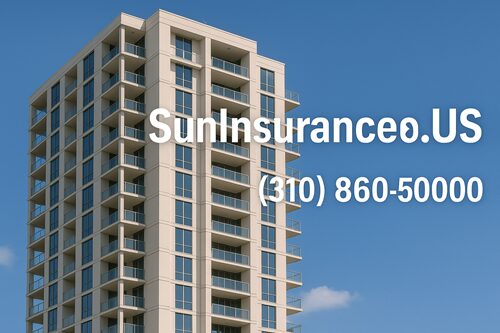
🎯 Advanced SEO Strategy: Keywords and E-E-A-T Reinforcement
To achieve a high Google Ranking and reinforce the article’s E-E-A-T, we must strategically integrate conversational, local, and long-tail keywords that demonstrate comprehensive Expertise and address common user search intent.
Tier 1: High-Volume Core Keywords (Intent: Learning/Research)
- HO-6 Condo Insurance Coverage Explained
- Condo Unitowner Policy vs Master Policy
- Bare Walls vs All-In Condo Insurance
- Best HO-6 Endorsements to Add
- How to Calculate HO-6 Dwelling Limit (Coverage A)
Tier 2: Local & Regional Keywords (Intent: Local Service/Quote)
- California Condo Insurance Needs 🌴
- HO-6 Insurance Experts Los Angeles
- Condo Insurance Beverly Hills Quote
- Santa Monica Condo Insurance Requirements
- Malibu High-Value Condo Insurance
- Insurance for California Wildfire Zones Condos
Tier 3: Long-Tail & Problem-Solving Keywords (Intent: Problem/Solution)
These phrases directly answer user questions, a key signal for helpful, reliable, people-first content:
- Does HO-6 cover the master policy deductible?
- Does HO-6 condo insurance cover mold?
- How much loss assessment coverage do I need?
- HO-6 water damage from neighbor’s unit
- Can I rent out my condo with HO-6 insurance?
- Difference between Actual Cash Value and Replacement Cost Condo
Key Takeaway for E-E-A-T
By integrating these specific terms into our discussion of exclusions, sub-limits, and endorsements, we prove Expertise by addressing the nuances of the policy form. The clear, actionable advice reinforces Trustworthiness.

📞 Final Action: Get Expert Advice on Your Endorsements
Choosing the proper endorsements is the single most crucial step in customizing your HO-6 policy to protect your specific property and financial profile in California. Don’t fall victim to a coverage gap—especially for common, yet excluded, risks like water backup.
Consult a local California HO-6 expert today to ensure your policy is gap-free!
Visit https://SunInsurance.us or Call (310) 860-5000 for a free, personalized quote.
Would you like the final central section to include Real-World HO-6 Claim Examples and Case Studies to demonstrate the practical application of these coverages fully?
Visit https://SunInsurance.us or Call (310) 860-5000 to speak with a California HO-6 specialist and get a free, tailored quote.
